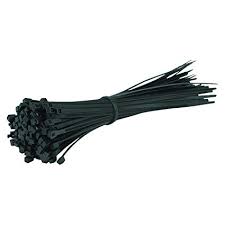
When considering wire tie strength, there are two very different ways to measure how strong it is. This requires that you factor in your actual application for using the ties.
Tensile strength measures the amount of force that the tie will resist before breaking. How much force is required to break it into two pieces.
Mechanical strength addresses how much practical force is necessary to force the tie’s locking mechanism to fail. This considers what is being bundled in the tie and how tightly that tie needs to be pulled as it is latched.
Not all ties use the same latching mechanism, so similar looking wire ties will have varying mechanical strengths.
The number to consider when comparing strengths between different ties is the LTS number. Normally, the most common failure point on a tie is its locking mechanism. LTS, which is a measure of the maximum amount of force a wire tie can withstand before the locking mechanism fails.
When considering whether a wire tie is strong enough for your application, not only do you need to consult the specifications, you also need to consider what material is used to make the tie.
Stainless steel ties are normally stronger than nylon, but they are much more expensive.
